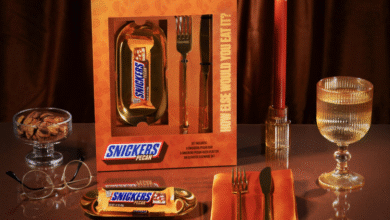
Toll bridges at Trenton-Morrisville, I-78, Easton-Phillipsburg, Delaware Water Gap to stop accepting cash toll payments on January 13
Four High-Volume Bridges Shifting to Cashless All-Electronic Collections, Leaving Motorists with E-ZPass and TOLL BY PLATE Payment Options
The Delaware River Joint Toll Bridge Commission (DRJTBC) announced Friday that four of its high-traffic-volume toll bridges—Trenton-Morrisville (Route 1), I-78, Easton-Phillipsburg (Route 22), and Delaware Water Gap (I-80)—will stop accepting cash for toll payments starting on January 13, 2025.
January 12 will be the final day for toll collectors to handle cash transactions at these bridges’ toll plazas, with cash service ending at 11 p.m. that evening. January 13 will mark the first full day that motorists will only have two toll-payment options: E-ZPass and TOLL BY PLATE.
With this change, the DRJTBC joins the growing number of toll agencies around the country and world that operate cashless, all-electronic tolling (AET) systems.
The Commission has launched a public awareness campaign to inform motorists about the switch to cashless tolling. The campaign includes billboards near each bridge, handout cards at toll plazas for cash users, variable message boards, signage at the remaining cash toll booths, and news releases like this one.
The DRJTBC first began transitioning to cashless tolling with the 2019 opening of the Scudder Falls (I-295) Toll Bridge’s highway-speed AET gantry. In June 2023, the Commission implemented AET on three low-traffic toll bridges: New Hope-Lambertville (Route 202), Portland-Columbia (Routes 611/46/94), and Milford-Montague (Route 206). A system-wide TOLL BY PLATE option was introduced in January 2024, a critical step in the Commission’s move to AET.
TOLL BY PLATE works by capturing a vehicle’s license plate information, and the registered owner is then mailed a bill. TOLL BY PLATE rates are generally up to twice as much as E-ZPass due to the higher costs of billing and payment processing. For example, the TOLL BY PLATE car toll is $3, compared to $1.50 for E-ZPass.
Motorist Impacts
Motorists who currently pay tolls with cash will face several changes when the four high-volume toll bridges go cashless on January 13:
- Toll booths will no longer have attendants, and toll booth windows and doors will be closed.
- Only a limited number of toll lanes may be open, and all open lanes will handle both E-ZPass and TOLL BY PLATE transactions. There will be no separate lanes for E-ZPass and TOLL BY PLATE users, although trucks will be directed to a specific lane at the Easton-Phillipsburg Bridge.
- Toll booths will display signage directing motorists to keep moving.
Get E-ZPass to Avoid Higher Toll Rates and Fees
E-ZPass is the most convenient and cost-effective option for paying tolls. The Commission’s 2024 E-ZPass toll rates are up to 50% lower than TOLL BY PLATE rates.
To establish an E-ZPass account with the Commission’s toll processor, visit www.ezpassnj.com. For assistance, the Commission’s customer service number is 800-363-0049.
More than 86% of all toll transactions at DRJTBC bridges use E-ZPass. The E-ZPass usage rates for the four bridges switching to cashless tolling on January 13 are:
- Trenton-Morrisville (Route 1) – 84%
- I-78 – 84%
- Easton-Phillipsburg (Route 22) – 86%
- Delaware Water Gap (I-80) – 82%
Toll Assessment
Under the new system, electronic tolling equipment will automatically assess toll charges for both E-ZPass users and those without E-ZPass. Non-E-ZPass motorists will have their license plates captured by cameras, and the registered vehicle owner will be mailed a bill. Bills are sent after 30 days or when toll charges exceed $50, whichever comes first.
It is important to pay these toll bills promptly to avoid additional fees and penalties.
TOLL BY PLATE Payments
Motorists can pay their TOLL BY PLATE bills by mail or online via the New Jersey E-ZPass website. For those wishing to pay in cash, options are limited to the walk-in centers in Newark, NJ, Camden, NJ, and New Castle, DE. Payment must be made by the prescribed deadline to avoid late fees.
Failure to pay the second bill on time will result in additional administrative fees and possible toll violations, with fees escalating to $30 per toll transaction.
Next Steps in System-wide AET Conversion
The transition to cashless tolling at these four high-traffic bridges is part of a multi-year plan to convert all DRJTBC tolling points to highway-speed AET. The next phase, set to begin in 2025, will involve the installation of an overhead gantry at the New Hope-Lambertville (Route 202) Toll Bridge, replacing the existing toll booth. The full conversion is expected to be completed by 2032.





